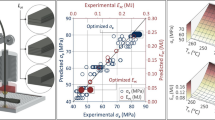Abstract
In this study, strength and frictional properties of pecan was determined as a functional of moisture content. A pecan was loaded between two parallel plates to determine the rupture force, deformation, power and firmness required to initiate pecan rupture and determined static and dynamic friction. The tests were carried out at five moisture contents of 5.23 %, 10.36 %, 15.78 %, 20.08 % and 25.42 % db and three axes (X, Y, Z). Physical characteristics of the pecan such as mass, dimensions (length, thickness and width), geometric mean diameter, sphericity, volume, and shell thickness were determined. The force required to initiate nut rupture decreased from 112.321 to 98.723 N, from 82.872 to 63,988 N and from 80.093 to 62.758 N for the length, suture and width orientations of loading with an increase in moisture content. The highest toughness (20.460 Jmm− 3) was obtained at moisture content of 25.42 % db. The firmness decreased to a minimum value when moisture content was increased from 5.23 to 10.36 % db and later increased as moisture content was increased further from 10.36 to 25.42 % db. The static and dynamic coefficients of friction on various surfaces, namely, plywood, mild steel and galvanized metal also increased linearly with increase in moisture content. The plywood surface offered the maximum friction followed by mild metal and galvanized metal.
Zusammenfassung
In dieser Studie wurden die Festigkeit und die Reibungskräfte der Pekannuss in Abhängigkeit vom Feuchtegehalt der Frucht bestimmt. Eine Pekannuss wurde zwischen zwei parallele Platten eingespannt, um die erforderliche Bruchstärke, Verformung, Kraft und Festigkeit festzustellen, die den Knackprozess einleiten und es wurde die Haft- und Bewegungsreibung bestimmt. Die Versuche wurden bei 5 Feuchtegehalten (5.23 %, 10.36 %, 15.78 %, 20.08 % und 25.42 % – jeweils bezogen auf die Trockenmasse) durchgeführt und mit Hilfe von einem 3-Achsensystem (X, Y, Z) ausgewertet. Die physikalischen Eigenschaften der Pekannuss wie Gewicht, Abmessungen (Länge, Dicke und Breite), das geometrische Mittel des Durchmessers, die Kugeligkeit, die Größe und die Schalendicke wurden bestimmt. Die Kraft, die benötigt wurde, um das Knacken der Nüsse einzuleiten, verminderte sich bei einer Erhöhung des Feuchtegehaltes von 112.321 auf 98.723 N, von 82.872 auf 63.988 N und von 80.093 auf 62.758 N, je nachdem, ob sie mit der Länge, auf der Nussnaht oder der Breite eingespannt wurden. Die höchste Bruchzähigkeit (20.460 Jmm− 3) wurde bei einem Feuchtegehalt mit 25.42 % erreicht. Die Härte verminderte sich bis zu einem Minimalwert bei zunehmendem Feuchtegehalt von 5.23 % auf 10.36 % und stieg später wieder an, wenn der Feuchtegehalt von 10.36 % auf 25.42 % weiter anstieg. Die Haft- und Bewegungskoeffizienten der Reibung bei unterschiedlichen Oberflächen, und zwar bei Sperrholz, Baustahl und verzinktem Metall, stiegen mit dem Feuchtegehalt linear an. Die Sperrholz-Oberfläche lieferte die höchste Reibung, gefolgt von Baustahl und verzinktem Metall.




Similar content being viewed by others
Literatur
Akca Y (2001) Cultivation of Walnut. Arı ofset matbaası, Tokat
Amin MN, Hossain MA, Roy KC (2004) Effects of moisture content on some physical properties of lentil seeds. J Food Eng 65:83–87
Aydın C (2002) Physical properties of hazelnut. Biosyst Eng 82(3):297–303
Aydın C, Ogut H (1981) Determination of some biological properties of Amasya apple and hazelnuts. Selcuk Univ J Agric Fac 1:45–54
Baryeh EA (2002) Physical properties of millet. J Food Eng 51:39–46
Braga GC, Couto SM, Hara T, Neto, CTPA (1999) Mechanical behaviour of macadamia nut under compression loading. J Agric Eng Res 72:239–245
Carman K (1996). Some physical properties of lentil seeds. J Agric Eng Res 63:87–92
Chung JH, Verma LR (1989) Determination of friction coefficients of beans and peanuts. Trans ASAE 32:745–750
Dehspande SD, Bal S, Ojha TP (1993) Physical properties of soybean. J Agric Eng Res 56:89–98
Dursun IG (1997) Bazı Urunlerin Nokta Yuku Altındaki Kabuk Kırılma Direnclerinin Belirlenmesi [Determination of the shelling resistance of some products under the point load]. Tarımsal Mekanizasyon Ulusal Kongresi, Tokat, Turkey, pp 950–957
Guner M, Vatandas M, Dursun E (1999) Bazi kayisi cesitlerinde cekirdek kirilma karakteristiklerinin belirlenmesi. [Determination of cracking characteristics of some varieties of apricot stones.]. Tarim Bilimleri Dergisi 5(1):95–103
Gupta RK, Das SK (1997) Physical properties of sunflower seeds. J Agric Eng Res 66:1–8
Guzel E, Ulger P, Kayısoglu B (1999) Urun isleme ve Degerlendirme Teknigi [Food Processing Technology of Agricultural Materials]. –Cukurova Universitesi Ziraat Fakultesi, Genel Yayın No:145, Adana, Turkey
Kabas O, Yılmaz E, Akinci I (2007) Some physical and nutritional properties of cowpea seed (Vigna sinensis L.). J Food Eng 79(4):1405–1409
Kalyoncu IH (1990) A Selection Study on Determining Important Characteristics of Almond Trees in Turkey. Master thesis. University of Ondokuz Mayıs, Samsun, Turkey
Khazaei J, Rasekh M, Borghei AM (2001) Physical and mechanical properties of almond and its kernel related to cracking and peeling. Journal of Agricultural Sciences. Azad Islamic University, Tehran, Iran
Koch K (2007) Germplasm resources ınformation network. United States Department of Agriculture. http://www.ars-grin.gov/cgi-bin/npgs/html/taxon.pl?9253
Liang TA (1977) A new processing for maximizing macadamia nut kernel recovery. Trans ASAE 20(3):438–443
Liang TA, Chin L, Mitchell JB (1984) Modelling moisture influence on macadamia nut kernel recovery. Trans ASAE 27:1538–1541
Miller I, Freund JE, Johnson RA (1990) Probability and Statistics for Engineers, 4th Aufl. Prentice-Hall of India Private Limited, New Delhi
Mohsenin NN (1978) Physical properties of plant and animal materials. Gordon and Breach Science Publishers, Inc., New York
Oloso AO, Clarke B (1993) Some aspects of strength properties of cashew nuts. J Agric Eng Res 55:27–43
Ott L (1977) An Introduction to statistical methods and data analysis. Wadsworth Publishing Company, Inc., Belmont
Ozdemir M, Ozilgen M (1997) Comparison of the quality of hazelnut unshelled with different sizing and cracking systems. J Agric Eng Res 67:219–227
Sen SM (1985) Cevizlerde kabuk kalınlıgı, kabuk kırılma direnci, kabukta yapısma ve kabuk dikine kırılma direnci ile diger bazı meyve kalite faktorleri arasındaki iliskiler [The correlations among shell thickness, shell cracking resistance, shell seal and shell upright cracking resistance with other some fruit quality factors on Persian walnuts]. Doga Bilim Dergisi 9(1):10–24
Sen SM (1986) Fındık Yetiştiriciligi [Cultivation of walnut]. Eser matbaası, Samsun
Sitkei G (1986) Mechanics of agricultural materials. Akademiai Kiado, Budapest
Tang GP, Liang T, Munchmeyer FA (1982) A variable deformation macadamia nut cracker. Trans ASAE 25(6):1506–1522
Tsung-Mui-Chung M, Verma LR, Wright ME (1984) A device for friction measurement of grains. Trans ASAE 27:1938–1941
USDA (1970) Official Grain Standards of the United States. US Department of Agricultural Consumer and Marketing Service, Grain Division, Revised
Viswanathan R, Palanisamy PT, Gothandapani L, Sreenarayanan VV (1996) Some physical properties of green gram. J Agric Eng Res 63:19–26
Xavier JA (1992) Study of Macadamia Nut Breakage. MS Thesis, Botucatu, SP, UNESP, Brazil
Acknowledgments
This study was partly supported by the Scientific Research Fund of Akdeniz University, Antalya, Turkey.
Author information
Authors and Affiliations
Corresponding author
Rights and permissions
About this article
Cite this article
Kabas, O., Vladut, V. Determination of Some Engineering Properties of Pecan (Carya illinoinensis) for New Design of Cracking System. Erwerbs-Obstbau 58, 31–39 (2016). https://doi.org/10.1007/s10341-015-0255-5
Received:
Accepted:
Published:
Issue Date:
DOI: https://doi.org/10.1007/s10341-015-0255-5




